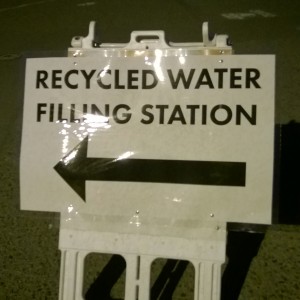 Water is a finite resource, much like oil. And water comes with a cost, much like oil. The difference is we need water to survive. Our bodies are made up of 55-65% water. Without it we dehydrate and eventually die. Some would argue that oil is the same way, except society lasted for thousands of years without it. However, the oil industry charges a steep price for oil. With those profits they build pipelines for the largest users, like airports use jet fuel and ships at port use diesel.
Water is a finite resource, much like oil. And water comes with a cost, much like oil. The difference is we need water to survive. Our bodies are made up of 55-65% water. Without it we dehydrate and eventually die. Some would argue that oil is the same way, except society lasted for thousands of years without it. However, the oil industry charges a steep price for oil. With those profits they build pipelines for the largest users, like airports use jet fuel and ships at port use diesel.
When it comes to water, we as a society have built pipelines to deliver water from faraway lands to other remote places. We’ve run pipes to our homes, businesses and parks. There are drinking water mains in the street that have charged hydrants for firemen to use, baseball and football stadiums are plumbed with the stuff and yes, even oil refineries use drinking water to manufacture the oil we need to keep everything mechanical running.
But water is cheap, maybe too cheap.
Did you know that two years ago $140 bought one acre foot of raw delta water in Fresno. Ok, let’s try that another way. $140 bought 325,851.427 US gallons. Or 1 gallon of raw delta water is $0.000429 in Fresno, California.
A barrel of crude oil sold Wednesday on the New York Stock Exchange for $56.85 or $1.353 per gallon (42 gallons per barrel). That’s nearly 315,418% more per gallon than when compared to water.
So if raw water is so cheap, then why do we haul it? Maybe it’s because we’ve been told we need to cut our water usage by 25% (in most places) in order to save supplies. And the easiest place to save on usage is to stop irrigating our yards. So we supplement that water usage by hauling recycled water. But at what cost?
Of the 10 residential recycled water fill stations in California, I contacted the two largest fill stations by volume; Dublin San Ramon Services District (DSRSD) and Central Contra Costa Sanitary District (CCCSD). Both have fill station numbers available, but I needed data on the per visit/community level to make this post work.
DSRSD’s data collection is short and to the point. Sue Stephenson – Community Affairs Supervisor said “we track amount of recycled water hauled by residential folks (more than 8 million gallons since January) and number of residential folks (2500 +/-) registered to haul recycled water.”
CCCSD was more than willing to provide usage information – and that was sent this morning for this article.
CCCSD Residential Recycled Water Fill Station Stats
Central Contra Costa Sanitary District makes their recycled water available at their Household Hazardous Waste facility at 4797 Imhoff Place in Martinez, CA.
Of their 1344 registered users spread across 11 communities and unincorporated areas, they have given away 3.28 million gallons (since October 25, 2014 – up to July 16, 2015).
I took their data and ran an analysis on it. I don’t know where everyone lives, so I assumed for ease of use that if someone says they live in Martinez, then the distance to their house from the fill station would be similar to the distance to drive downtown, on average across the data set.
I ran that same idea for every community except people in the unincorporated areas and figured out the distance from “their house” to the fill station. I used Google Maps as the basis for mileage and also copied “drive time” (at 12 noon) for each location.
I put that data into a chart.

Residents of Concord are closest (the downtown is on the west side of town) and residents of San Ramon are the furthest away. The CCCSD fill station is also in Martinez, but the downtown is rather far. Please note however that drive time to Moraga and Clayton are long compared to the miles that must be traveled, this is due to a lack of freeways to those locations.
Let’s run some analytics on these numbers.
First, the going mileage rate from the IRS for 2015 is $0.575/mile traveled. For each of these communities the cost to drive to (or home) from the fill station is below. For the sake of lack of data, I dropped the Unincorporated group and the OSA/Emp (out of service area/employee) segment.

The take away is this: residents of San Ramon will pay the most when it comes to miles traveled at $21.97 round-trip. Residents of Concord will pay the least at $4.03 per round trip.
It would make sense that San Ramon is the highest, but they are also closest to the Dublin San Ramon Facility so it would be cheaper for them to go there, unless the hours don’t fit their schedule for whatever reason.
If we choose to calculate cost when it comes to time traveled for the fill station we need to add in another element. Let’s fire up the 2013 US Census data for median income per community.
Using that data we can build this chart:
I did some math to calculate income to dollars per minute worked. If the United States Department of Labor says you must work 2080 hours per year (40hrs/week x 52 weeks/year), then we divide income by 2080 hours times 60 minutes/hour. Residents of Orinda earn $1.32 per minute of work and residents of Concord tend to earn $0.53 per minute.
If we apply this information to drive time we get the chart below:
Unsurprisingly, residents of Orinda and Moraga will spend the most to drive to get recycled water while residents in Concord and Pleasant Hill will spend the least. If we include the IRS mileage + cost of time to drive we get this.
Cost per trip to drive to and from the fill station is $46.60 for a person living in Moraga and $9.30 for someone living in Concord. Quite a stark difference.
The crazy part about all of this… knowing that my water bills costs $60 every two months, compared to someone using 2,000 gallons per day at $1540 every two months, based upon drive time and income levels – it is economically not worth it to haul recycled water, at all. Sorry, but it’s true. Water is cheaper from the tap, even with penalties.
You should also take into account that I have not included the capital cost of buying tanks/pumps/hoses/etc. once you do make the trip to get the water.
So why do it? If hauling recycled water is not economical, why are people making thousands of trips to a fill station for free recycled water? Maybe now would be a good time to ask why people buy $120,000 Tesla’s that are all electric versus buying a $15,000 Honda Civic that has a gasoline engine – the answer is the same – people like to feel they are doing something good for the environment.
The nitty gritty
If we tack on the unit cost of treated potable water versus treated recycled water we get two different price points. A hundred cubic feet (or 748 gallons) of potable water from a hydrant in the Contra Costa Water District is about $4.01 (which is cost of water + energy surcharge). That same unit of measure for water from East Bay Municipal Utility District is $4.15. From the Central Contra Costa Sanitary District its $3.38 per 1,000 gallons (or $2.53 per 748 gallons). The difference here is the cheaper water from CCCSD is not plumbed everywhere, like CCWD and EBMUD have done. Plus, the water quality from CCCSD is not fit for drinking, only irrigation.
Using the latest usage stats from CCCSD we can build this chart below.
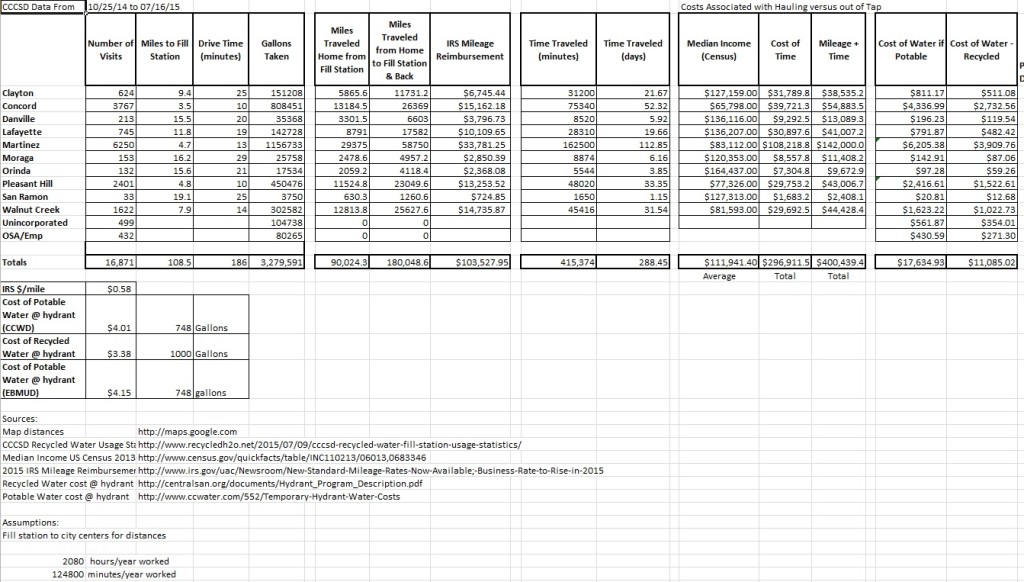
Download full excel file here: Cost to Haul Recycled Water.xlsx
In the 16,871 trips by the community, 3,279,590 gallons have been given away for free at a cost of $17,634.93 if the water came from a faucet; or $11,085.02 from a recycled water hydrant. When we include costs for time and miles traveled we find $400,439.4 has been spent in total to haul free recycled water from CCCSD.
Water is a finite resource, this is why recycled water is a apart of our future. Between DSRSD and CCCSD – about 2900 people value it as a resource and bring it home. These are the leaders in our communities and we should commend them for their time, money and effort they spend to do what is environmentally responsible given the drought we are in.
Sadly, the cost to lay new pipe in the street is ‘a million dollars a mile.’ We have a long way to go.
Using raw water rates from 2013 – 3.28 million gallons of water would have cost $1407. Food for thought.

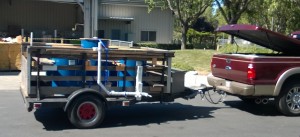
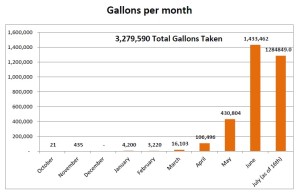



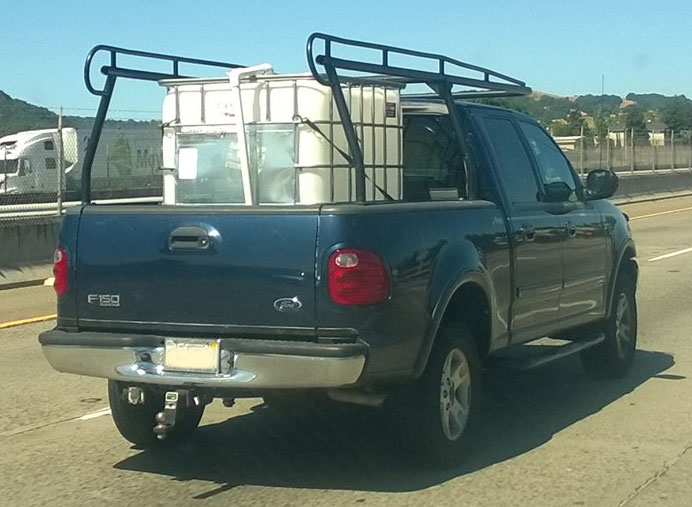
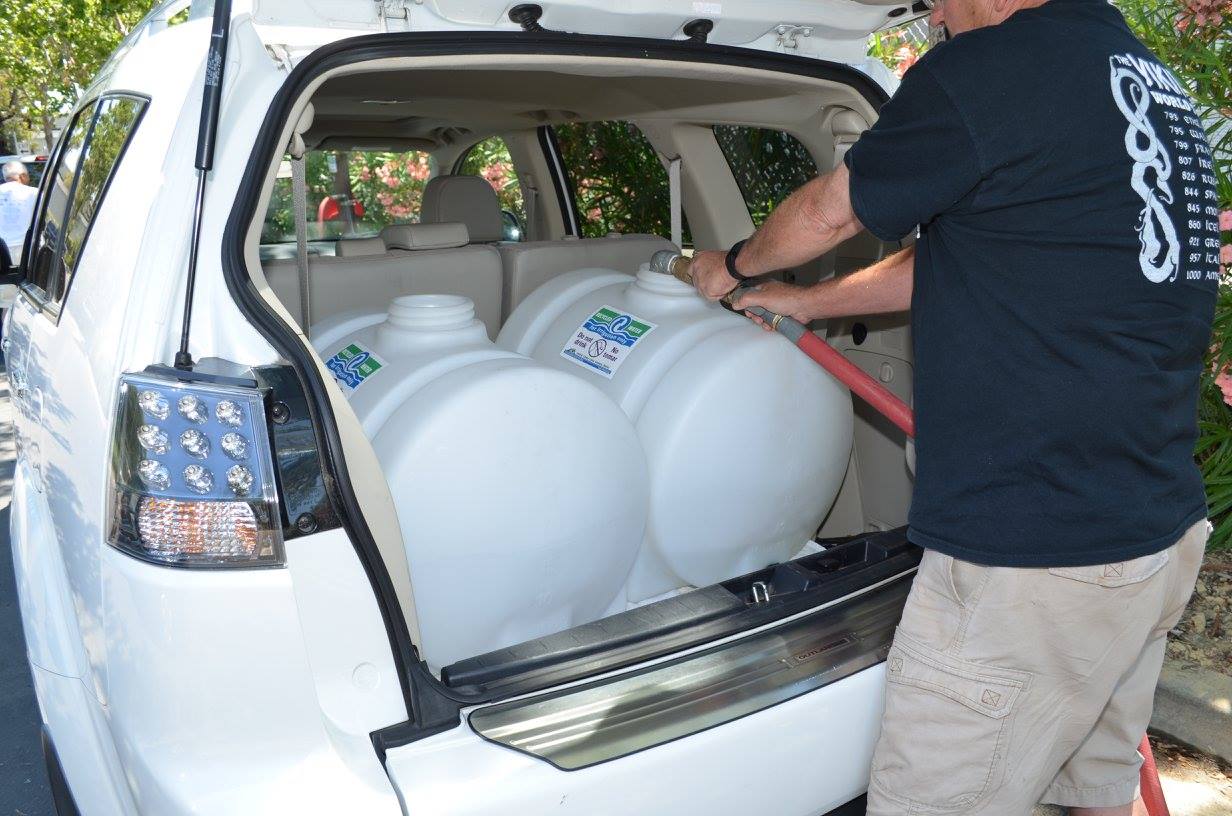
Leave a Reply